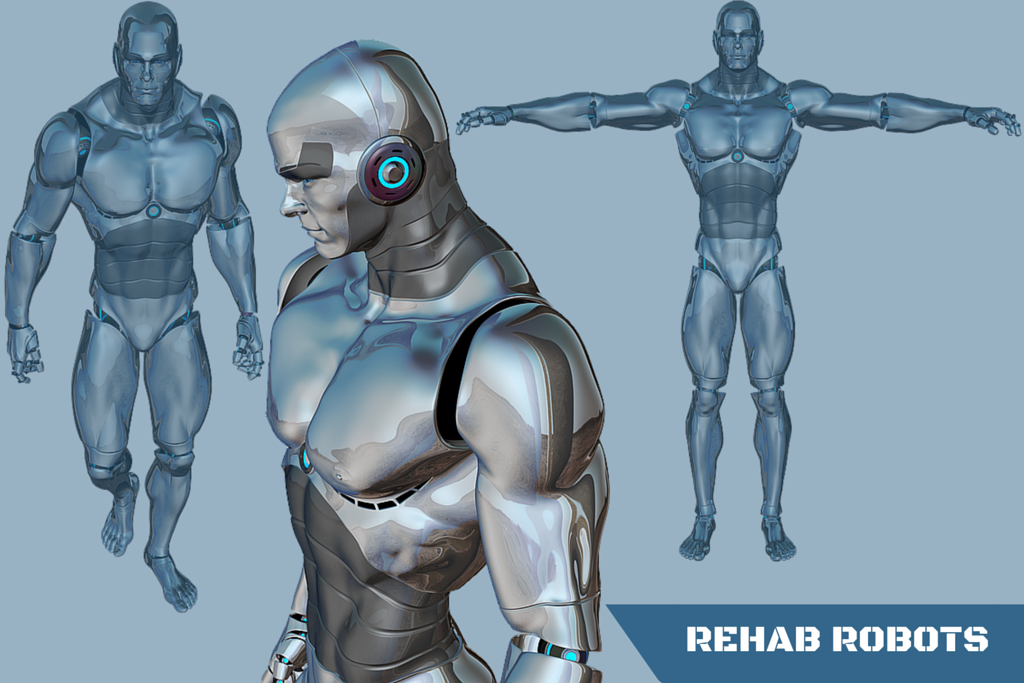Rehabilitation Robots for physical therapy are being produced and tested and there are scientific studies being performed on robot assisted therapy in stroke rehabilitation.
One day the hope is that these rehabilitation robots will be affordable for consumers and play a significant role in aiding patients with recovery from non-traumatic brain injuries anywhere in the world regardless of the patient’s income status.
Michelle J. Johnson, Phd, the executive of the Rehabilitation Robotics Lab at the University of Pennsylvania, talks about these rehabilitation robots during her TedX Speech in this video:
Johnson, additionally an educator at Penn, has been attempting to create affordable rehabilitation robots to give treatment to patients who have endured stroke, spinal wounds or cerebral paralysis.
One of Johnson’s numerous undertakings is Flo, a humanoid robot she named after her grandma. Flo looks like a toy summoned from an enchanted toy shop. Intended to mentor stroke patients with treatment activities and recreations, Flo is furnished with a feature screen and camera which permits it to be remotely worked by a specialist or advisor.
How did Michelle get involved with physical therapy robots?
Michelle had been at Penn a few years, so she’d been involved in the matter of how innovation can help individuals with brain incapacities, particularly grown-ups with handicaps after strokes. She began to consider how to innovate treatment for these patients.
One of the inquiries her team is attempting to answer is whether utilizing the innovation really causes the brain to heal and recover back to it’s previous state. So they’re teaming up with imaging neuroscientists to help answer this question.
What is the message that Michelle wants to share?
How we can make robotics less expensive so that many individuals can benefit from their effective treatment. Michelle wants to introduce people to the idea of robotic therapy and make them familiar and comfortable with her robotics lab and therapy robots. She feels that this message is important because right now when you say “rehabilitation robots” or “therapy robots” many wouldn’t know what that means or even be able to draw a mental image.
How did Michelle’s robots Baxter and Flo come into the world?
Well, Baxter is currently being assembled at a cost of $30,000. His purpose will be to perform low level tasks, at a much lower expense than that of multiple salaried humans.
One robotics specialist working on Baxter and Flo is currently focusing on the human-human interaction during treatment so that he can translate that interaction into a robot-human setting. His focus is to create the most compelling “real” robot that carries out robust treatment with its patients.
The main objectives with Baxter and Flo are that they are effective and affordable. Michelle’s team is working in Mexico and Botswana where affordable rehabilitation robots could have a tremendous impact. But questions still remain that her team must answer. Such as, what treatment is included in affordable robotic therapy? And how will they serve patients who need treatment beyond the clinical setting, such as hospitalized patients or at home patients.
And again, these robots must be both effective and affordable. That is the ultimate goal.
Although Flo has proven effective and Baxter is an amazing robot at $30,000, most patients can’t afford a $30K robot for therapy. So, her team is working on reducing costs further. At this point, Flo nor Baxter has the lead in being the first marketable consumer therapy robot, it is still either robot’s game.
Will rehabilitation robots take the place of people?
Absolutely not, that was never the goal. Therapy and rehabilitation robots will always include human interaction throughout treatment. However, with the rising number of stroke victims around the world there will be a deficiency in human therapists to aid all patients. So, having a team of rehabilitation robots will help to fill the gap.
The robots are designed not to completely take over the role of the therapist, but to aid the patient and therapist during treatment. Simply viewed as a collaborator or assistant making the therapist’s work less demanding and therapy treatment more efficient.
So, it is still a good idea to learn how to become a physical therapist assistant.
Rehabilitation Robots are Being Built & Tested by Others Too
Michelle isn’t the only one working on rehabilitation robots for physical therapy. There are other good folks in the PT and robotics world working together on affordable therapy solutions. Stroke patients are the main segment that is being researched heavily for use of physical therapy robots.
Below are a couple of videos showing some rehabilitation robots designed to help stroke patients recover.
Physical Therapy Robots for Stroke Victims
https://www.youtube.com/watch?v=54lJkGpETDo
This bionics lab is targeting stroke victims because stroke patients can actually recover from stroke. They must go through phases of physical treatment, that the robot can emulate and take the patient through. This robot has 7 actuators and 2 arms, each with 7 degrees of motion.
Here is yet another quick example of a rehabilitation robot, called the ARMin II. This one may be of less cost to produce as it is simply a single arm robot. Here is a study done on arm training stroke patients with the ARMin II rehabilitation robot..
Other Advances in Physical Therapy
The field of physical therapy is progressing quickly. As the industry grows, new innovations are created to improve treatment methods for a wide variety of patients with many different conditions. Therapy robots are a pretty awesome advancement to physical therapy!
What other physical therapy technology or treatment advances do you know about? Tell us in the comments below! 🙂


Leave a Reply